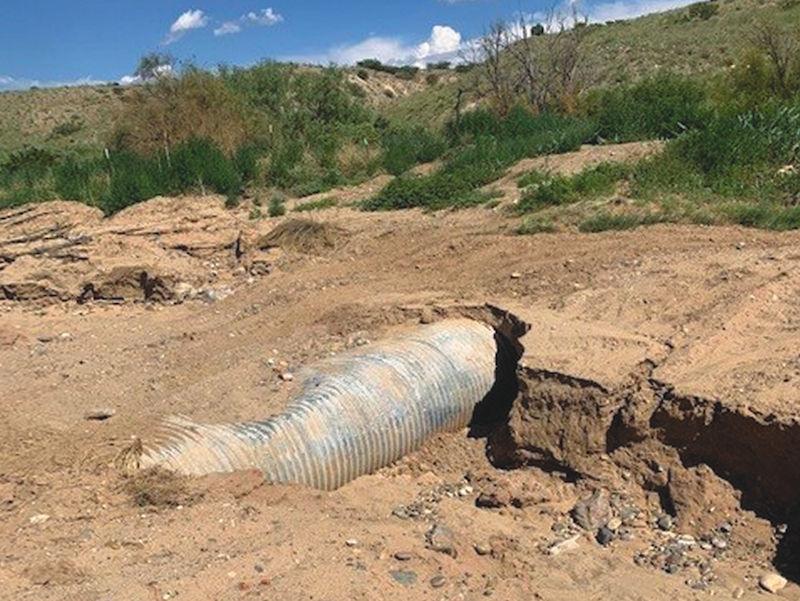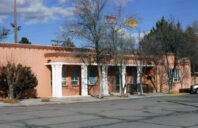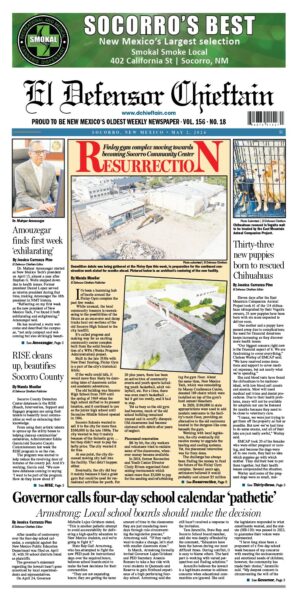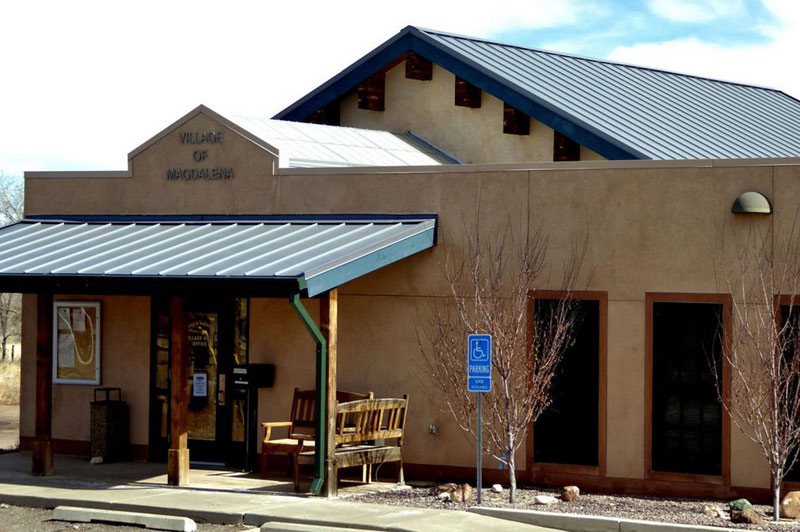
The La Joya Acequia ditch road was damaged in the July 23 storm and the acequia culvert was exposed and damaged from a flash flood that came from the arroyos to the east.
Photo courtesy of Jerry Wheeler
The La Joya Acequia will benefit from more emergency funding to help repair damage from last July’s storms.
Governor Michelle Lujan Grisham signed an emergency declaration last week providing $250,000 in funding to help fix damage from a July 23 monsoon event. The governor previously signed a Nov. 30 emergency declaration that provided up to $750,000 for the Department of Homeland Security and Emergency Management to support public recovery efforts organized by city and county officials for the July 2 storm.
The nine-mile long La Joya Acequia runs from La Joya to Contreras. The system of irrigation ditches has been in use since the 1600s, making it one of the oldest acequias in the area, according to the acequia’s Mayordomo Matthew Saiz. The July 23 storms hit areas that had already been damaged by the first storm.
“This July 23 storm event essentially shut down the La Joya Acequia for the rest of the summer and the early fall,” said Socorro county Emergency Manager Gail Rogers. “This severely impacted the local farming community in this small area of Socorro County. The Governor’s Executive Order will allow the La Joya Acequia to have the repairs implemented and completed by the spring so that water can once again flow in the Acequia.”
Having the acequia closed beginning in late July when it normally closes in October meant a huge loss of income for the nearly 60 local farmers, traditionally called parciantes, who depend on it, said Saiz.
“We lost feed for a lot of the livestock kept alive on the property, not only for me, but for the other parciantes.”
The feed that comes out of La Joya goes to feed horses all over the state.
“It’s a small town, but it produces a lot of agriculture for livestock,” said Saiz.
The first July storm damaged six sites, while the second disaster less than 30 days later damaged nine sites, said Jerry Wheeler, the county’s Emergency Coordinator. Silt and debris washed into some of the acequia, a concrete ditch washed out and had to be totally replaced, an area of riprap that the Army Corps of Engineers were putting in to control water flow was washed out and needs to be replaced and some of the culverts were exposed and need to be replaced. The storms almost took out a box culvert and washed out part of a levee. If the box culvert does not get replaced, it will likely be washed out in the next storm, said Wheeler, which could allow a home and barn to be flooded.
The next step in recovery will be the Department of Homeland Security and Emergency Management writing project worksheets for each site to establish the dollar value they think it will take to repair it, said Wheeler. Once they authorize repairs, the acequia board will pay for them and then get reimbursed by the state.
“These occurrences of damage to the acequia has been ongoing since, I believe 2010,” said Saiz. “And a lot of the infrastructure that the Army Corps of Engineers has put in to stop the arroyos from hurting the acequia has been degraded to where it doesn’t work anymore.”
The emergency funding will help repair the damage, but not restore the levees that are meant to prevent the arroyos from damaging the acequia, said Saiz. However, he believes federal funding is in the works to help restore the levees.
Saiz believes it is important to maintain the acequia for the sake of farming communities, the local economy and the local wildlife.
“Our acequia board president is a farmer in La Joya. He’s a birder, and he’ll walk up and down the acequia, and there’ll be between 60 and 70 different species of birds eating off the acequia.”






















